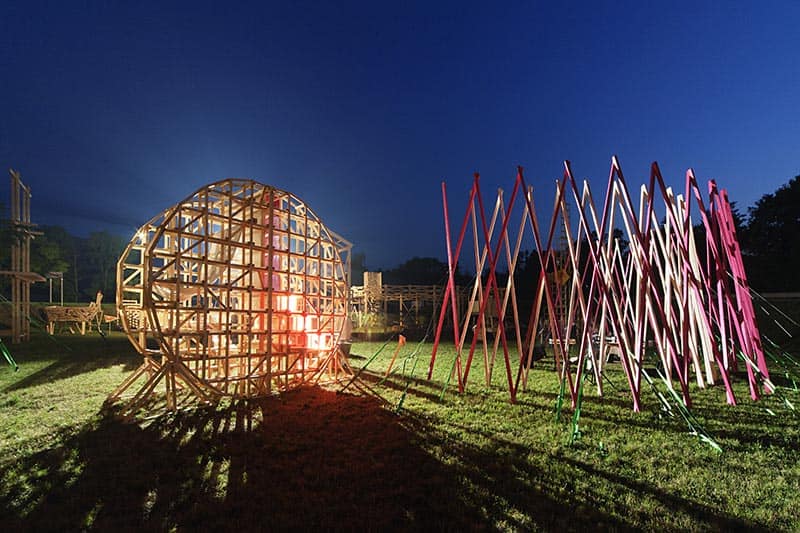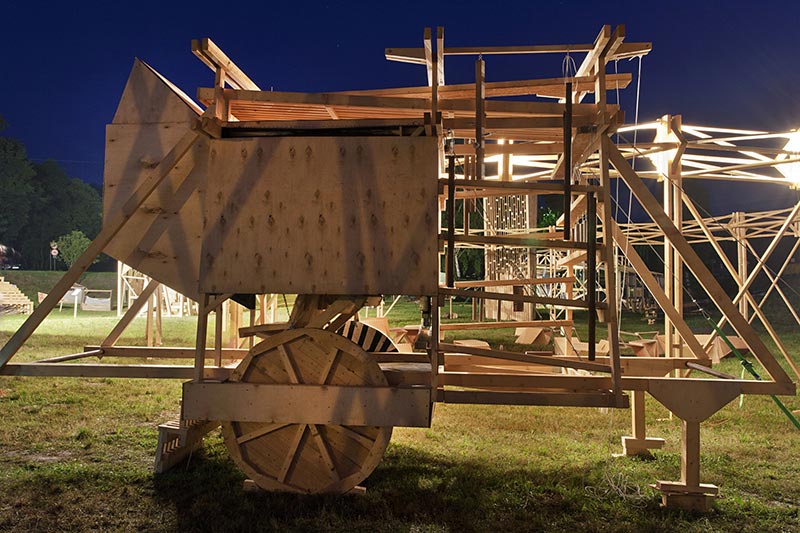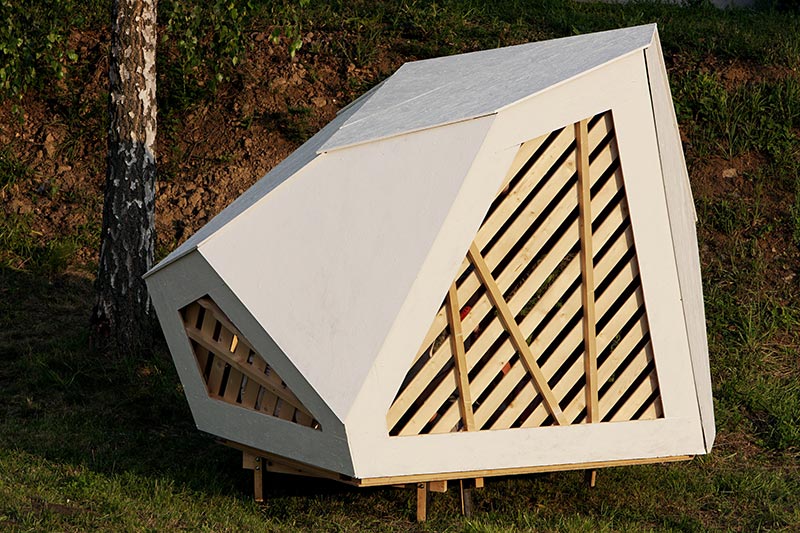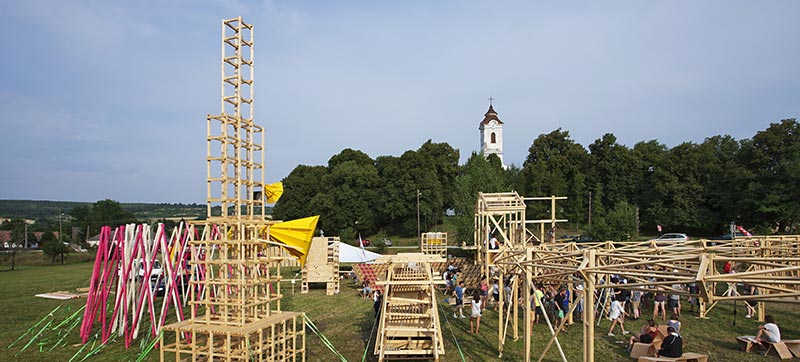

A debate on whether or not contemporary architectural discourse should shift its attention to rural settlements, rather than only focusing on the city, has recently been echoed by many architects including Rem Koolhaas. Entering this conversation, Hello Wood, the Architizer A+ Award-winning summer workshop, has invited 150 practicing architects, academics and students to take part in Project Village: an architectural experiment that redefines the concept of the village. Although the village is an outgrowth of its own socio-political, historical and environmental context over a long period of time, Project Village asked the question whether this process can be addressed differently: Can settlements generate their own context over a relatively short period of time?
Participants were searching for new methods in real-time masterplanning; practiced the craft and politics of actual building and constructed a community that established its own, possibly a new type of village. Project Village became an instant settlement of 150 people during the one week in which it was built. Units of a traditional village where approached from a community perspective in a contemporary form: among the 15 installations were a Migrant House, a Rolling Pub, a Village Cinema, and even a residential building depicting the cycle of birth and death. As a result, Project Village in its first year became a catalyst of events and social interaction. It is a manifold community space ready to be occupied by and engage various groups of public.

In the past ten years numerous art projects have focused on the topic of community settlements: from the experimental settlement of AVL Ville built by Joep Van Lieshout in Rotterdam, through Yael Bartana’s propagandistic art work Wall and Tower, to Thomas Hirshhorn’s Gramsci Monument. These works all raise questions on the role of community settlements, their reciprocal relation to their environment, and their urban, cultural, socio-political context. Starting in 2015, Project Village joined this debate. Continuing the tradition of the 6-year-old Hello Wood, participants were invited to build a one–to-one model of their collective vision of a village: after designing the different components, they have built a settlement in one week, and set it on its way to occupy various environments and to be occupied by different communities and multiple activities.

Team leaders of Hello Wood, arriving from various parts of the world and from diverse academic and professional environments, came with entirely different references for what an ideal village should look like or should be. While the traditional village in Hungary is usually built along one street, in Mexico - for instance - it is based on a circular-structure. Since the creators of Project Village worked without the cultural and architectural heritage of any existing village, this creative freedom resulted in a settlement based on the needs and desires of a team of multinational thinkers.

The installations do not seek to provide a general solution to the problems of villages around the world. The creators did, however, search for new ways of addressing social architecture and the use of public space. The installations reflect certain problems of contemporary society such as immigration, multifaith communities and the issues of private property. The creators also reimagined the institutions of any well-established village: The Cinema, the Pub and and the Community Places.

Project Village 2015 is the first phase of a 3-year-long architectural endeavor. During the first phase the creators have established a Village that’s primarily focusing on engaging with communities, generating social interactions and testing it as a public space. In the next chapter in 2016, the Village will expand, evolve, find its borders, and defend itself if needed. In the final year of the Project Village cycle, parts of the settlement will be conserved, reused, revitalized, deconstructed.

Rather than manipulating and scrutinizing the architectural construct of an existing village, Project Village establishes its own settlement and examines the relationship between communities and their built environment through partaking in the politics and process of building, while challenging student-teacher-client-designer synergies at work, in search of innovative methods in participatory design processes.
The Village made its debut as an event space in the Valley of Arts festival, after which it became a travelling circus related to the theme, and nuanced by the context of the Sziget Festival and Budapest Design Week.
comments